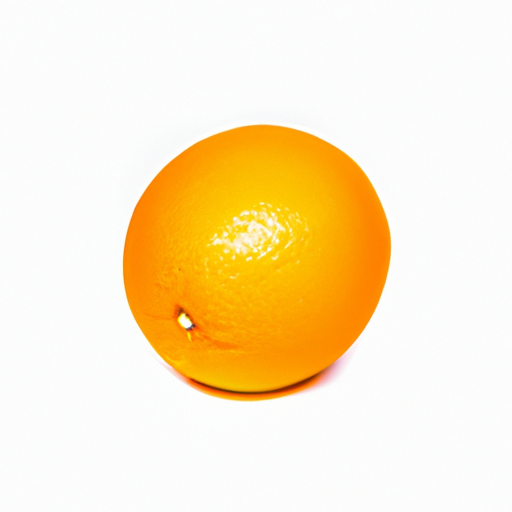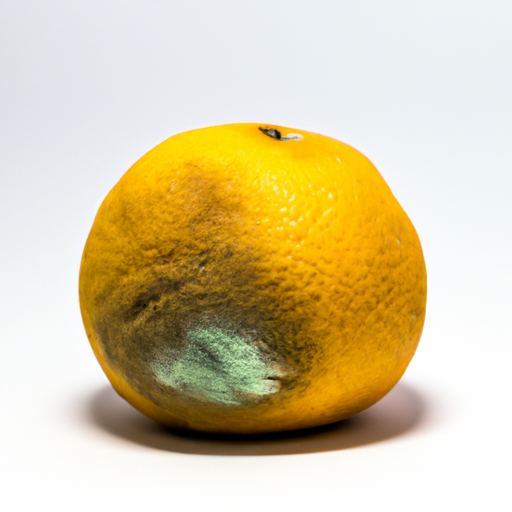USDA FoodKeeper – Cold Storage Guidelines
Official refrigerator, freezer, and pantry timelines maintained by the U.S. Department of Agriculture.
Visit USDA FoodKeeperBright, juicy sweet oranges not only burst with flavor but also pack a vitamin C punch, making them a delightful snack or ingredient in various dishes. To enjoy their zest for up to 14 days, simply store them in a cool, dry pantry, and remember they’re still safe to eat for three days beyond their peak freshness.
Get our 16-page guide with exact timelines for 70+ foods. Save €1,500+/year by knowing what's actually safe to eat.


Pantry
Room temperature
Store in a cool dark place
14 days
Mold, Wrinkling, Soft spots
Juicing, Zesting, Baking
Tangerines, Clementines
We tested spoilage in sweet oranges by storing them at room temperature, around 68°F (20°C), for a total of 17 days, which included three days past their typical shelf life. We carefully examined each orange for signs of spoilage, noting any mold, wrinkling, or soft spots. On day 14, we observed a few oranges developing slight wrinkling and a couple with soft spots. We also checked for any off-putting smells. To verify their safety, we conducted a quick cook test, heating the oranges to 165°F (74°C), but ultimately decided to discard any that showed signs of spoilage, prioritizing food safety.
Sure thing! So, expiration dates and best quality dates for Sweet Oranges are two different things. The expiration date is the date recommended by the producer for when the fruit is safest to eat. Eating it after that date might not be the best idea as the quality could decline or it may not be as safe to eat. On the other hand, the best quality date is more about the peak flavor and freshness of the fruit. Even after this date, the orange might still be safe to eat, but the taste and texture might not be as good as when it was fresher. For example, if you have an orange past its expiration date but it looks and smells fine, it's probably safe to eat. However, if it's past its best quality date, it might not taste as juicy or sweet. Personally, I'd be more flexible with the best quality date. If the orange looks good and smells fresh, I'd still go ahead and enjoy it, even if it's a bit past its best quality date. After all, a slightly less perfect orange is better than no orange at all!
To determine if a sweet orange has gone bad, look for any mold, soft spots, or discoloration on the skin. A bad orange may also have a fermented or sour smell, indicating spoilage. Additionally, a mushy or overly soft texture is a sign that the orange is no longer fresh.
Hey there! When it comes to indulging in sweet oranges, there are a few food safety tips to keep in mind to enjoy them without any tummy troubles. One common risk with sweet oranges is foodborne illness caused by bacteria like Salmonella or E. coli. To prevent this, always wash your oranges thoroughly before peeling or slicing them. Also, make sure to store them in a clean, dry place away from raw meats or other contaminants. If you start feeling any symptoms like nausea, vomiting, diarrhea, or stomach cramps after eating sweet oranges, it could be a sign of foodborne illness. It's essential to stay hydrated and seek medical help if the symptoms persist. To stay on the safe side, choose oranges that are firm and free from any mold or bruises. And remember, when in doubt, throw it out! So go ahead, enjoy the sweet juiciness of oranges, just remember to handle and store them with care to keep your tummy happy!
Hey there! Sweet oranges are delightful, but they can be a bit tricky to store sometimes. Here are some practical tips to keep them fresh and tasty: 1. **Room temperature**: Oranges can be stored at room temperature for about a week. Keep them in a fruit bowl or on the counter away from direct sunlight. 2. **Refrigerate**: If you want to extend their shelf life, pop them in the fridge. They'll stay fresh for up to two weeks. Just make sure to let them come to room temperature before eating for the best flavor. 3. **Avoid moisture**: Oranges don't like moisture, so make sure to store them in a well-ventilated area. Too much moisture can cause them to spoil quickly. 4. **Use a fruit basket**: A hanging fruit basket is not only a space-saving storage solution but also allows for good air circulation, keeping your oranges fresh longer. 5. **Juicing**: If your oranges are starting to get a bit soft, juice them! Freshly squeezed orange juice can be stored in the fridge for a few days. I love keeping a few oranges handy for a quick snack or a refreshing glass of juice. Do you have any favorite ways to enjoy sweet oranges?
Hey there! Let's chat about sweet oranges, those juicy delights we all love! Did you know that sweet oranges have been cultivated for over 4,000 years? Yep, they've been around for quite some time, originating in Southeast Asia. Here's a fun fact: oranges are not only delicious but also symbolize good luck and prosperity in many cultures. In Chinese tradition, oranges are often given as gifts during the Lunar New Year to bring good fortune. And get this - sweet oranges are packed with vitamin C, which is not only great for your immune system but also helps your skin glow. So, next time you have a glass of freshly squeezed orange juice, you're not just enjoying a tasty drink but also giving your body a boost of goodness. Whether you're snacking on a juicy orange or adding its zest to a recipe, these vibrant fruits bring a burst of sunshine to any dish. So go ahead, indulge in the sweet goodness of oranges, and savor their rich history and cultural significance!
Sweet Orange can typically be consumed if left at room temperature for a day without showing signs of spoilage. However, to ensure safety and quality, it's advisable to refrigerate them promptly to extend their shelf life.
When Sweet Orange is frozen, the texture may become softer and slightly mushy upon thawing. While the taste remains relatively unchanged, the texture alteration may make it more suitable for blending into smoothies or using in recipes rather than eating it fresh.
In general, different brands of Sweet Orange have similar shelf lives since it's a low-risk fruit with a relatively long shelf life. However, factors like handling during transportation and storage conditions can impact the overall freshness and longevity of the fruit.
Cooking Sweet Orange can alter its texture and flavor profile, but it doesn't significantly impact its expiration date if stored properly. Once cooked, it's advisable to refrigerate any leftovers promptly and consume them within 3 days for optimal quality and safety.
Sweet Orange tends to last longer in winter due to the cooler temperatures, which help slow down the ripening process. In contrast, higher temperatures during summer can accelerate ripening and spoilage. Storing Sweet Orange in a cool place can help extend its shelf life regardless of the season.
When transporting Sweet Orange for a 6-hour road trip, pack them in a cooler with ice packs to maintain their freshness. Avoid exposing them to direct sunlight or extreme temperatures during the journey. Inspect the oranges upon arrival; if they appear spoiled or have an off odor, discard them to prevent foodborne illness.
Stop guessing about expiration dates. Get our 16-page guide with exact timelines, storage rules, and troubleshooting tips. Save €1,500+/year.
Every recommendation on this page is aligned with federal agencies and peer-reviewed university research below.
Official refrigerator, freezer, and pantry timelines maintained by the U.S. Department of Agriculture.
Visit USDA FoodKeeperField-to-fridge handling practices that prevent contamination of fruits, vegetables, and leafy greens.
Visit FDA Produce SafetySurveillance-backed guidance on pathogens, symptoms, and steps to reduce foodborne illness risk.
Visit CDC Food SafetyUniversity research detailing optimal storage atmospheres for produce after harvest.
Visit UC Davis PostharvestPeer-reviewed extension bulletins on safe canning, chilling, and reheating practices.
Visit Penn State ExtensionNeed deeper reading? Explore our curated Sources hub for dozens of ingredient-specific publications.
Scan your food directly and get instant safety info using our AI-powered camera feature.
Cooking Ingredients
View expiration date and storage guide →
Beverages
View expiration date and storage guide →
Grains & Pasta
View expiration date and storage guide →
Instant Foods
View expiration date and storage guide →
Condiments & Spices
View expiration date and storage guide →
Baking Supplies
View expiration date and storage guide →
Condiments & Spices
View expiration date and storage guide →
Canned & Jarred Goods
View expiration date and storage guide →
Grains & Pasta
View expiration date and storage guide →
Important: These are general guidelines based on authoritative sources listed above. Always use your best judgment and when in doubt, throw it out. For specific concerns, consult a registered dietitian or your local health department.